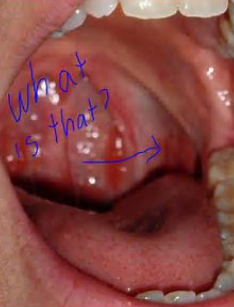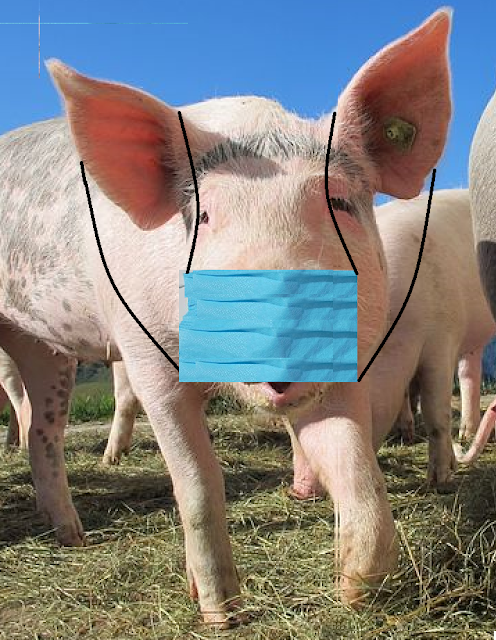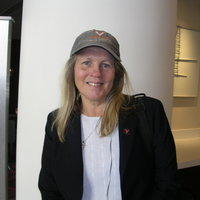After covering up the CFS relationship to AIDS for over three decades.
The CDC calls Chronic Fatigue Syndrome "a devastating disorder."
http://www.cdc.gov/cdcgrandrounds/archives/2016/february2016.htm
How Dan Peterson's Friend Mary Guinan Helped the CDC Corrupt the Hard Drive of AIDS and Chronic Fatigue Syndrome Research
http://www.cdc.gov/cdcgrandrounds/archives/2016/february2016.htm
How Dan Peterson's Friend Mary Guinan Helped the CDC Corrupt the Hard Drive of AIDS and Chronic Fatigue Syndrome Research
Historians who want to trace the series of
missteps that led to the HHV-6 pandemic and Holocaust II may benefit from
taking a close look at a little known researcher at the CDC who played a
curious role in both of the supposedly separate AIDS and chronic fatigue syndrome
epidemics. Her surprising inability to see an obvious link between the two
syndromes may be one of the important seeds of the whole HHV-6 disaster. She is
mentioned in both the Shilts history of the early AIDS epidemic and Hillary
Johnson’s journalistic account of the CDC’s bungling of the epidemic of
facetiously-labeled chronic fatigue syndrome.
According to Shilts, Mary Guinan worked
for James Curran in the CDC’s venereal disease division. She was the person who
sent James Curran the first ill-fated report on the first cases of what would
eventually be called “AIDS” in “homosexuals.” With fellow VD chasers Harrold
Jaffee and Curran, she shared the CDC AIDS Task Force’s preoccupation with venereal diseases
epidemiology. She helped impose the CDC heterosexist venereal groupthink on the
emerging data of what would eventually be gayified epidemiologically into “Gay
Related Immunodeficiency (GRID).”
Ironically, considering what turned out to
be the role of HHV-6 in AIDS, Shilts reported that in 1981, “on a hunch, Guinan
called a drug company that manufactured medicine for severe herpes infections.
They told her about a New York City doctor who had been seeing . . . dreadful
herpes infections in gay men.” (ATBPO p.72) Shilts wrote that “Guinan
was shaken by her investigation. She was accustomed to dealing with venereal
diseases, ailments for which you receive an injection and are cured. This was
different. She couldn’t get the idea out of her head: There’s something out
there that’s killing people. That was when Mary Guinan hoped against hope that
they would find something environmental to link these cases together. God help
us, she thought, if there’s a new contagion spreading such death.” (ATBPO
p.72) One way that God certainly wasn’t helping was by having a VD-obsessed
doctor and her colleagues trying to comprehend a pandemic that wasn’t, strictly
speaking, venereal.
In Shilts’s account of Guinan, seeing the
epidemic through gay-obsessed lenses was a given. He wrote about one of her
days in 1981: “It had been another typical day of gay cancer studies for Mary
Guinan. She had wakened at 6 a.m to breakfast with gay doctors and community
leaders and asked again and again, ‘What’s new in the community?’ What new
element might have sparked this catastrophe.” (ATBPO p.82) It was just
gay, gay, gay—24/7—for the AIDS Task Force. They simply couldn’t wash the gay
out of their hair. It was one of those times when every gay person should have
checked to see whether they still had their wallets. Someone was about to sell
them a gay epidemiological bridge.
As Shilts sympathetically presents Guinan,
he inadvertently nails the whole CDC psychological and sociological bias
problem: “Guinan felt helpless and frightened. This was the meanest disease she
had ever encountered. She strained to consider every possible nuance of these
peoples’ lives.” (ATBPO p.83) What she really meant was gay nuances of
gay lives. It is supremely ironic that Shilts wrote, “The CDC, she knew, needed
to work every hypothesis imaginable into the case-control study.” (ATBPO
p.83) Every hypothesis imaginable? Not by a long shot. How about the
hypothesis that these cases were just extreme versions of the DuBois 1980
Atlanta cases that the CDC had been informed about? The un-gay cases.
The process of identifying the emergence
of the epidemic in nongay drug users, as described in Shilts’s book, makes it
clear how gaycentric the thinking of the pioneers of the AIDS epidemiological
paradigm was: “At the CDC there was a reluctance to believe that intravenous
drug users might be wrapped into the epidemic, and the New York physicians also
seemed obsessed with the gay angle, Guinan thought. ‘He’s said he’s not
homosexual but he must be,’ doctors would confide in her.” (ATBPO p.83)
Everybody was becoming an expert on gayness in those days. Given the reluctance
to even see connections in those cases of nongay drug-using outcasts, it should
come as no surprise when years later anyone saw the obvious connections between
the epidemics of AIDS and chronic fatigue syndrome they were treated like they
were strictly out to lunch. The AIDS paradigm was fatefully and messily
intertwined with all the psychological baggage of sexual titillation and
repulsion. If the CDC was unprepared psychologically to see drug users “wrapped
into the epidemic,” how about all the good clean living white heterosexuals
with the AIDS-like permutations of the immune system that characterize chronic
fatigue syndrome?
Guinan’s San Francisco trip with Harold
Jaffe to interview AIDS patients and heterosexual controls also revealed the
CDC mindset: “The CDC staffers could tell gay from straight controls by the way
they reacted to the questions about every aspect of their intimate sexual
lives. Heterosexuals seemed offended at queries about the preferred sexual
techniques, while gay interviewees chatted endlessly about them.” (ATBPO p.96)
Oh those gays! A herd of chatty Cathies if ever there was one. Given the
bias-laden epidemiology that this chattiness was about to imprison the gay
community in, one is tempted to say that loose gay lips sank a proverbial
legion of gay ships. If one were watching this on a screen in a movie theater,
one would want to scream out to the clueless gay interviewees for their own
sake, “For Heaven’s sake, shut up!”
Guinan was one of the CDC researchers
credited by Shilts with recognizing that hemophiliacs and blood transfusion
recipients might ultimately also become victims of “gay pneumonia.” She also
was one of the first to worry about the AIDS infection possibilities of “semen
depositors.” (ATBPO p.132) Guinan cast a wide net: “No sooner had she
convinced the CDC that intravenous drug users were indeed a category of GRID
cases separate from gay men, then her field of investigations discovered the
first reported GRID cases among prisoners and prostitutes.” (ATBPO
p.132) Unfortunately epidemiological net wasn’t wide enough to catch the 1980
DuBois Atlanta Cases of immune dysfunction. Also unfortunately for her, she
helped create the very consequential epidemiological urban myth of Patient
Zero. She was the first person to come in contact with Gaetan Dugas the
so-called gay Typhoid Mary who the CDC would turn into the “Patient Zero” or
more appropriately, “Scapegoat Zero,” of the epidemic depending on your point
of view. He would become an icon for all the venereal gaycentric thinking down
at the CDC.
In one of those amazing moments in
Holocaust II in which a scientist comes so face-to-face with the truth but
fails to see what is right before their eyes, Shilts reports that when Guinan
was studying drug users, “blood sampling of the intravenous drug users also
revealed that, although many were infected with cytomegalovirus, the viral
strains were all different. This was strong evidence that the herpes virus had
not developed some new virulent strain. No single strain emerged, lending
further weight to Don Francis’s hypothesis that a new virus, not CMV was a
work.” (ATBPO p.133) The CDC, in retrospect, was most likely eyeballing
strains of an undiscovered virus that would be called HBLV when Gallo’s scientists
supposedly “discovered” it in 1986. It was subsequently named HHV-6. In
retrospect it is pretty obvious that the CDC was looking at HHV-6 but thinking
it was only CMV. (And those who wanted to see a retrovirus would have been
especially predisposed not to see a new DNA virus like HBLV/HHV-6.)
It is interesting and perhaps revealing
that Guinan and her colleagues could deal with the fact that the disease or
syndrome manifested itself differently in gay men and drug
users—presumably for reasons that would ultimately be figured out. But God
forbid that anyone would subsequently suggest that even though there were
differences in the manifestations of chronic fatigue syndrome and AIDS that
they were essentially manifestations of the same agent and the same pandemic.
Distinctions were not turned into differences where drug users and gays were
concerned, but where the gays with AIDS and the middle-class straights with
chronic fatigue syndrome were concerned, every distinction,—even the
teeny-tiniest or most irrelevant kind—was immediately considered a dramatic
how-dare-you-compare-these-apples-and-oranges difference. Such bogus thinking
would be at the heart of the “chronic fatigue syndrome is not AIDS” paradigm
which would guide public health through the next three decades.
For all her good work Guinan was
eventually rewarded with the position of assistant CDC director. Unfortunately
for all the victims of HHV-6, what she did do at the CDC didn’t have as much
impact on the well being of the world as what she did not do. It was
Guinan in 1985 who got a call from Dan Peterson, a former colleague and one of
the two doctors who are credited with recognizing an outbreak of the absurdly
named “chronic fatigue syndrome” in their Lake Tahoe practice. According to
Hillary Johnson, “The two had become friends during a shared stint at the at
the University of Utah hospital in Salt lake City in 1976.” (OW p.31)
Also, according to Johnson, “Peterson had frequently sought her counsel on
different infectious disease cases; he had also struck her as a gifted
diagnostician.’ (OW. P.31)
Johnson reported that “Guinan listened as
her former colleague described his Tahoe patients, her curiosity aroused by the
possibility that this ailment, which three recent medical papers had described,
was occurring in epidemic form. Previously, researchers had described it as a
sporadic illness. She remembered too, that Atlanta clinician Richard DuBois had
made a presentation to agency staff on the malady early in 1983, even proposing
that the new mono-like syndrome might be a second epidemic of immune
dysfunction rising concurrently with AIDS.” (OW p.31)
Did this lead Guinan serendipitously into
a more complicated epidemiological vision of a variable epidemic that included
both what was called “AIDS” and “chronic fatigue syndrome”? Not on your life.
These first CFS patients were not gay and not drug users. They were from
medical practices that could be described as being devoted to folks who ride in
the middle and front part of society’s bus. Such stark social differences would
make it of no consequence or interest that study after study would show one
immunological and neurological similarity after another between AIDS and
chronic fatigue syndrome. Guinan had helped build a paradigm that was so gay,
gay, gay and so socially radioactive that the links between AIDS and CFS would
be willfully ignored, buried alive by denial, and through a kind of determined
public health radio silence, for all intents and purposes, be covered-up big
time.
Ignoring the obvious, Guinan sent the
future “CFS” patients of America on one of the greatest medical wild goose
chases in history. According to Johnson, she passed the Peterson cases on to
Larry Shonberger, chief of the CDC’s epidemiology within the Division of Viral
and Ricketsial Diseases. Not surprisingly, Johnson reports that “Schonberger
and his staff of epidemiologists had a mandate to monitor and occasionally
investigate outbreaks of viral diseases, with the exception of AIDS, which by
1985 had been awarded a separate division and staff and more than half of the
federal agency’s entire annual research budget.” (OW p.32) And so,
because of Guinan’s phone call and her very questionable judgment, CFS research
headed down exactly the wrong road
Had Guinan wisely directed the Lake Tahoe
cases in the direction of the CDC’s AIDS division back in 1985, there was still
a chance that the political and medical apartheid of the “chronic fatigue
syndrome is not AIDS’ paradigm and Holocaust II might not have been able to
fully materialize. But AIDS had been so gayified and turned into such a sexual
bogeyman and scarlet letter syndrome, that Guinan and everyone else at the CDC
couldn’t for the life of them admit that average (i.e. heterosexual) Americans
were coming down with any similar or related form of acquired immunodeficiency.
Instead those people were given the whitewash of a diagnosis of chronic fatigue
syndrome. Those good country people, to borrow a term from Flannery O’Connor,
couldn’t in a million years be suffering from something that had at one time or
another been called Gay Cancer, Gay Pneumonia, and Gay Related
Immunodeficiency. After all, they weren’t gay.










